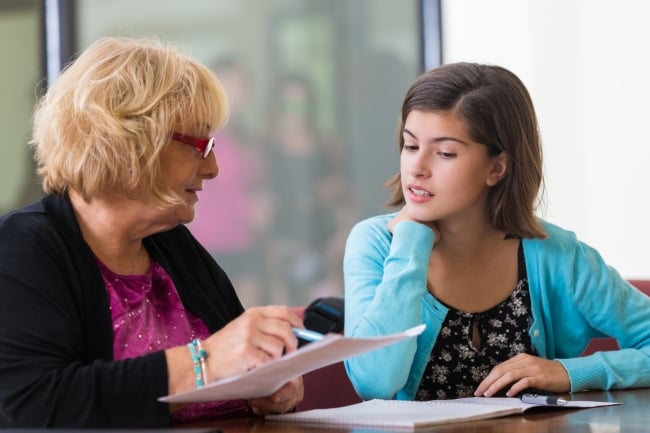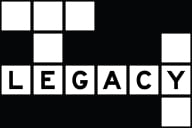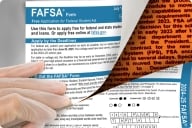You have /5 articles left.
Sign up for a free account or log in.

As interest in higher ed declines, high school counselors are increasingly focused on noncollege duties.
High school students are less certain than ever that they’ll attend college after graduation, according to a survey of counselors released Thursday by the higher ed consulting firm EAB. That’s having a transformative impact on the job of college counselors, too.
The report, “From Burnout to Breakthroughs,” is based on a survey of 1,500 high school counselors across the country. It found that the number of students unsure about their college plans is substantially higher at public high schools than private ones: 63 percent of public school counselors reported that fewer students planned to attend college now than before the COVID-19 pandemic, compared to 18 percent of private school counselors.
The report also found that students’ reasons for forgoing a college degree varied greatly according to the kind of school they attended: 49 percent of public school counselors said most students cited affordability as a barrier to college, and 41 percent said students have concerns about the value of a degree. Meanwhile, the top two reasons private school counselors gave was that students wanted to take some time off before matriculating (54 percent) or that they expressed uncertainty about their career plans (36 percent).
Counselors at both public and private high schools also reported spending a majority of their time (65 percent) on non–college counseling duties, like mental health check-ins and academic assistance—far more than they devoted to helping students prepare for college applications, which survey respondents said takes up only 35 percent of their time on the job on average.
“Right now, counselors are feeling the effects of rising mental health concerns among young people,” Emily Niedermaier, a senior director at EAB, told Inside Higher Ed. “They don’t have as much time to focus on college planning anymore.”
Open to Alternatives
Stephen Schneider, a counselor at the public South High School in Sheboygan, Wis., said his experience lines up with the survey’s findings, noting that his work has changed primarily because college-going attitudes have evolved so dramatically.
It’s not that fewer of his students are actually going to college—that number has remained static for almost 15 years, he said—but rather that they are more open to postgrad alternatives and less reserved about planning for them in advance.
Ten years ago, he said, 80 percent of South High seniors responding to an end-of-year survey would say they planned to go to college in the fall, but only about 50 percent would actually enroll. The school has discontinued the survey, but Schneider said that if it were conducted today, he thinks students would be much more honest about their intentions, especially given that doubts about degree value are at an all-time high.
“I think families are far more inclined to say, ‘We’re not sure about the economical choice,’ and that they want to explore other options,” he said. “They’re smarter consumers, in a lot of ways.”
Schneider, who’s been in counseling for decades, said that attitude shift has transformed the way he and his peers view their own jobs: They’ve moved away from college prep as their main responsibility and toward more personalized counseling. His district has reframed counselors’ advising role—formerly known as College Planning—to Individual Student Planning.
Schneider sees that as a good thing: The less proscribed a student’s future is, he said, the more his work involves really getting to know their needs and aspirations.
“In the ’90s and ’00s, there was a real focus on ‘college for everybody,’ where, regardless of a student’s needs or intentions, the goal was to get them to a four-year college after high school,” Schneider said. “That was a lazy approach … The evolution of the profession has been in realizing that this is a much more complex decision students are making. To me, that’s invigorating.”
Breaking Through Burnout
The report also shows burnout on the rise at all types of institutions: 71 percent of counselors, and 79 percent of public school counselors, said they’d experienced burnout at some point in the past year.
Schneider said that, at least in Wisconsin, burnout is largely due to widespread staff shortages. Those shortages are more pronounced at rural schools, he added; his caseload is about 75 students, a decent ratio for a large urban high school. But regardless of caseload size, the COVID-19 pandemic had a major impact on counselors’ outlook and sense of purpose, he said.
“This is exhausting work. No matter what, you go home and you’re tired. But there’s a difference between going home and being tired and knowing your work is impactful, or going home tired and doubting that,” he said. “There was a real flameout during COVID, when nobody really knew whether the work they were doing was having an impact and students were struggling so much.”
The EAB survey found that counselors with the largest student caseloads ended up spending more time on college counseling than those with smaller cohorts and less time on mental health and academic support. They are also more likely to use generative AI tools to help manage their workloads than those with fewer students.
Schneider said the pandemic also set back students’ academic preparedness, which in turn meant a lot more work for counselors trying to get them ready for college, should they decide to attend.
“Our current seniors were eighth graders when the world turned upside down, and that’s really clear when you look at their academics,” he said. “I think things are just now starting to turn around.”









